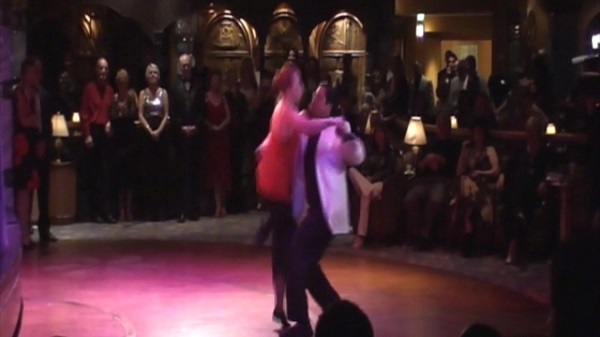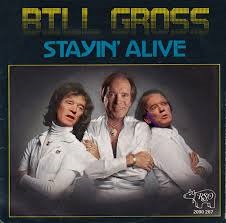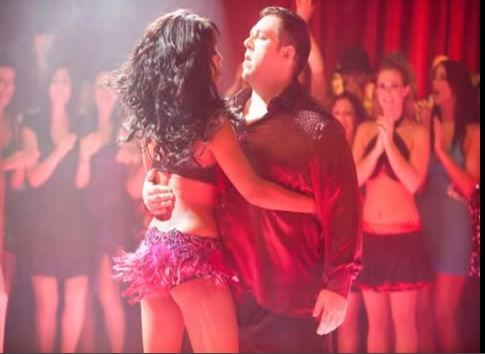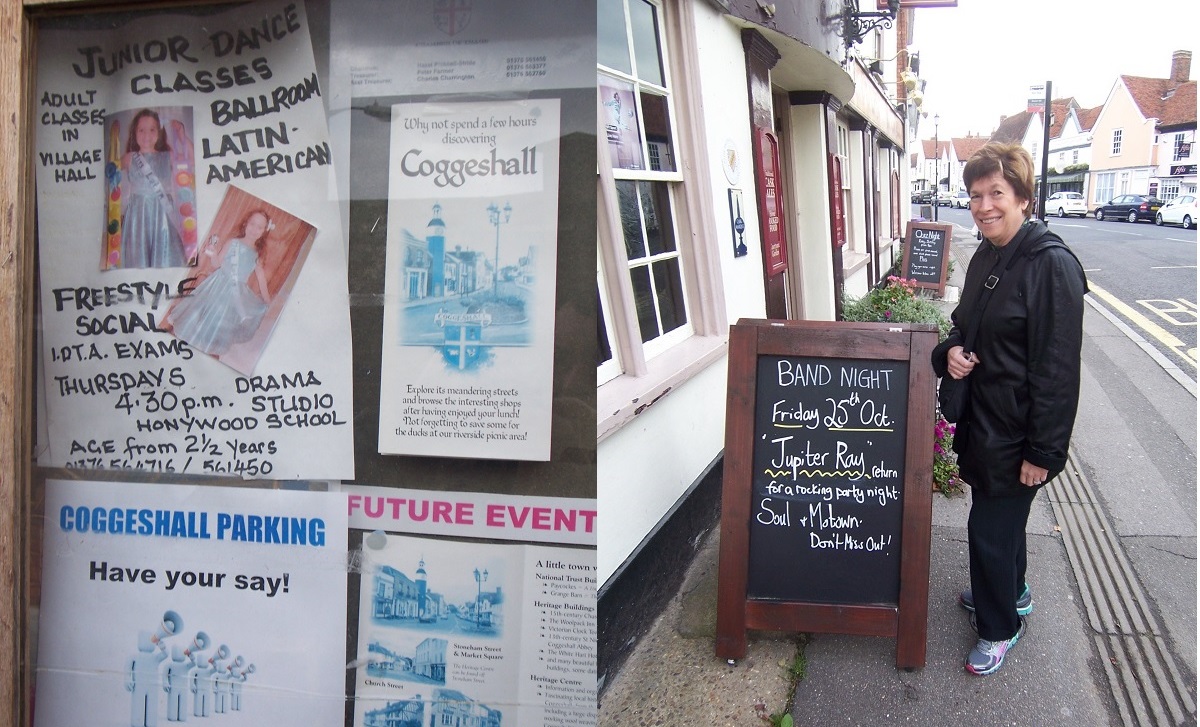There are lots of routes to success in Silicon Valley. Data Visualization Company founder and CEO Arijit Sengupta took one that might be considered highly unusual … unless you knew how extensive the social couples dancing offerings were at his alma mater. (In fact, a key reason that the Clintons’ daughter Chelsea chose Stanford University was because of its extensive dance offerings. And the dedication and major contributions of of Richard Powers have kept Stanford famous for its dancing.) But what is interesting about Arijit Sengupta is that he has woven dance-inspired ideas—e.g., a “floating floor” for his office or favorite songs for his smartphone’s ringtones—into his business life, as chronicled in Fast Company. His only regret: he doesn’t have enough time to dance anymore because his company is so successful that he is in great demand to lead it and to speak on behalf on the Big Data industry.
Category Archives: Business
Investment Titan Bill Gross Strikes a Dance Pose
Dancing is a great way to stay physically and mentally fit, especially when your day job is on the downswing. Bond trading guru and co-founder of the giant PIMCO recently parted company, which—perhaps along with a couple of drinks–gave him the impetus to overcome his inhibitions and lack of recent practice to take to the dance floor. (For those who don’t recall, Stayin’ Alive was the theme song to both the popular Staying Alive movie and its even more popular predecessor about the hustle dance, Saturday Night Fever.)
Real Men Dance: New Cuban Fury Movie
Even Small Towns Can Have Lots of Social Couples Dancing Opportunities
Perhaps it’s BECAUSE they are small, and dancing doesn’t require a large and expensive facility and a lot of wealthy people to support it. All that’s needed is a few enthusiasts (including a teacher if lessons are needed), a few hours of a smooth floor, and some suitable dance music (which could be on an iPod or other gadget). Wilddancer took the opportunity during his recent trip to the United Kingdom to visit his ancestral home of Coggeshall, current population about 4, 000. (His ancestor John Coggeshall emigrated from there in 1635, and became the first president of Rhode Island. His descendants form a classic family tree, and celebrated a large family reunion about 25 years ago.) Without even trying, within a few minutes he found two opportunities.
Debonair Dancers Survey Helps Boost Membership
It takes effort to keep ANY group intact and lively. This goes double when there is natural attrition that requires replacing members. But what KIND of effort is best? Wilddancer’s mission is to advise and suggest ways to maintain or increase membership. One of the best ways is to tap the members themselves for ideas, and Wilddancer helped the Silicon Valley-based Debonair Dancers dinner-dance group do just that in a survey of their members during the first calendar quarter of 2013. (Debonair Dancers’ membership had fallen well below their long-term 100-couple level (they formerly had a waiting list), so concerns were growing.) The results of that survey are at survey. The last page of that report lists more than 25 ideas, and the board and members have already followed up on several of them, resulting in a membership boost of more than 20% during the ensuing six months. In effect, the survey acted as a catalyst to remind members of the situation and energize them to act.
Which Star Athletes are the Best Dancers?
Not tennis players, according to The Wall Street Journal. The Journal’s reasoning was based on a handful of tennis players’ lack of success on the reality show “Dancing with the Stars”. But there are lots of factors beyond the stars’ dancing ability that play big roles determining their rankings on that show–the judges’ biases, the general popularity of the stars, and especially the show’s ratings (watchership). And the Journal’s definition of dancing was pretty broad, and included a bunch of stuff that goes well beyond couples dancing. But their point may be well taken. All-time tennis champion Martina Navratilova’s professional dancer partner, Tony Dovolani, blamed it on the need for tennis players to be “heavy-footed” when they hit the ball … a far cry from the classic “tripping the light fantastique” that is the goal of a ballroom dancer. Other tennis players put it down simply to lack of dance–or even music–experience due to their focus on tennis from an early age that leaves little time for recreational/social activities. And speaking of social, the smile on a dancer’s face counts for a lot, but tennis champ Monica Seles underlines that in tennis it’s how the ball is hit that counts.
Performances on dancing with the Stars is ABC’s highest-ranked (though declining) show is probably not the best gauge of athletes’ dancing abilities. Male athletes in popular spectator sports are usually big and strong, but not always nimble. Sometimes dance training can improve their athletic prowess, though. Cornell University’s football coach once sent several clumsy players to ex-Rockette Rosalie Bower Amoroso, who co-owns Ithaca Academy of Dance in Ithaca, NY, along with her ex-Rockette sister, Diane. Rosalie’s efforts apparently paid off, as she attended a game where one of her football player students did a “grand jete” (big jump) over a would-be tackler.
Financially, of course, the athletes are better off. Their performance on the baseball diamond, football gridiron, boxing ring, or tennis court is far better rewarded than elite dancers’ performance on the competition dance floor at Blackpool or other high-level competitions.
Dancers Increasingly Adopt Electronic Technology
Rachel Holdt’s “Considering Technology Integrated Dance Curriculum in Post-Secondary Education” paper, published in the new Journal of Emerging Dance Scholarship (JEDS), considered a broad range of technology, including Facebook, that could enhance the overall process of educating dancers. But during the combined conference of the World Dance Alliance-Americas (WDA-A) and the Dance Critics Association (DCA) in Vancouver, BC, Canada during July 29-August 4 she and Duncan Holt (from UK’s University of Hull) discussed with Wilddancer some of the specific hardware and software tools that are already being applied to teaching specific techniques, to creating the scenery for the performance, and to the performance itself,. Projectors can play several roles, from pico projectors used with smartphones to play back a performer’s practice instantly so s/he can learn, to giant models that can be used with scrims to create instant scenery. Isadora software can create special effects for live performances, either pre-programmed or controlled in real time by a variety of devices. By using the Kinect camera that accompanies the Microsoft Xbox, or other control devices, performers can control the audio-visual support for their performances. And a host of gesture recognition systems is available that can create visual effects essentially only limited by the imagination and creativity of the user. (We also suspect that Google Glass will play a role, too, as Google is already sponsoring its use in filmmaking.)
Comprehensive Study to Document Whole Canadian Dance Scene
Of great significance to the Canadian dance scene is the ambitious Canada Dance Mapping Study, discussed in some depth during the combined conference of the World Dance Alliance-Americas (WDA-A) and the Dance Critics Association (DCA) in Vancouver, BC, Canada during July 29-August 4. Inspired by ones conducted in the United Kingdom, New Zealand, and two other countries (none has ever been done in the United States), the Study is notable because it is a cooperative effort among national, provincial, and municipal government bodies. (Appropriately, the research team also includes a “B-Boy” break dancer.) All sorts of dancing, including a range of folk dancing (notable are the numerous Ukrainian dance groups in the Manitoba province and the aboriginal dances). A literature search and preliminary data collection have already turned up some interesting, though in some cases questionable, results. In a recent year, 1.2 million Canadians attended 2,400 dance performances, though this is inconsistent with the cited figure of 15% penetration (Canada’s population is about 35 million, so even if only adults were included the 15% seems high), which compares with a 7% penetration in the USA. Another survey showed that 43% of adults living in the Ontario province dance socially at least once per month; this is highly doubtful. But the best is yet to come, as the team is creating a massive email database of individuals by combining lists recruited from all sorts of groups (both government and non-government) and professionals, that will be used to conduct a country-wide survey of individual dancers.
Can a New Song and a New Movie Reignite Interest in Hustle?
People say that The Twist killed touch dancing. And that about 15 years later the Disco craze (with its signature Hustle dance) brought it back (for a while, at least). (More recently, Hip Hop, which is influencing what “freestyle” dancers do when there is a dance floor and rap music, may be killing touch dancing again.) According to Bloomberg Businessweek, the hottest song this summer is Get Lucky, from a pair of 40-year-old French guys called Daft Punk. Get Lucky has a solid disco beat, which ought to please dancers who still do, or can do, the Hustle. Since it took from the song’s release on April 19 until the July1 Businessweek issue, and Wilddancer hasn’t heard it yet on a dance floor, it may take more than this song to make Hustle popular again. Interestingly, though, was the purposely seductive way the song was introduced, which seems to have been initiated more by the musicians than the marketing folks at Columbia Records. Even more interesting to us, though, was that the marketers discovered that their audience wanted to participate in the launch, saying that they felt “We don’t want to be treated like consumers. We want to be treated like dance partners.” It remains to be seen how many of those (passive) listeners will become (active) dancers.
And another very recent boost to this disco theme occurs in the new (July 5, 2013) movie from popular Spanish director Pedro Almodovar, titled I’m So Excited, from the eponymous 1982 disco hit by the Pointer Sisters. Three gay flight attendants on this farcical “flight from Hell” do a dance routine to the song (which is unmistakably a Hustle tune, though on the slow side for Hustle dancers).
Hustle dancing’s heyday was marked by the Saturday Night Fever movie and jammed disco dance spots like Studio 54, and like many fads it declined dramatically over time as the “fever” subsided. But the dance itself is sexy, Hustle groups have stayed active around the USA, and there is an association (the International Hustle Dance Association). There is even an IHDA Bronze Hustle Manual written by Billy Fajardo, Jami Josephson, and DVIDA that has been accepted by the NDCA (National Dance Council of America). We understand that this manual serves as a syllabus to guide judges for competitions. Most of the other books on Hustle—including The Engineer’s Guide to Hustle Dancing—are a little long in the tooth, so the real proof that Hustle is being reborn would be publication of Silver and Gold level sibling manuals by the IHDA.
July 27 is National Dance Day!
Who knew???This is a big deal in the dancing community, and needs to get more publicity. Wilddancer (http://wilddancer.com/) believes that ANY dancing is better than no dancing. According to the Dizzy Feet Foundation: ” Launched in 2010 by reality TV show “So You Think You Can Dance” co-creator and Dizzy Feet Foundation co-president Nigel Lythgoe, National Dance Day (NDD) is an annual celebration that takes place on the last Saturday in July. This grassroots campaign encourages Americans to embrace dance as a fun and positive way to maintain good health and combat obesity. NDD achieved national recognition when Congresswoman Eleanor Holmes Norton (D-DC), a long-time proponent of healthy lifestyles, announced at a press conference on July 31, 2010, in Washington, D.C., that she was introducing a congressional resolution declaring the last Saturday in July to be the country’s official National Dance Day.” Even though NDD is not a household word across America, there is lots going on. There are two dance routines posted on the Dizzy Feet site—Everybody Dance and Hip-Hop Master Class 2013. Local organizations and teachers are planning flash mobs. Stanford’s Richard Powers and several vintage dance experts are putting on the Santa Clara Vintage Dance Weekend beginning July 26. And much, much more across the country.





